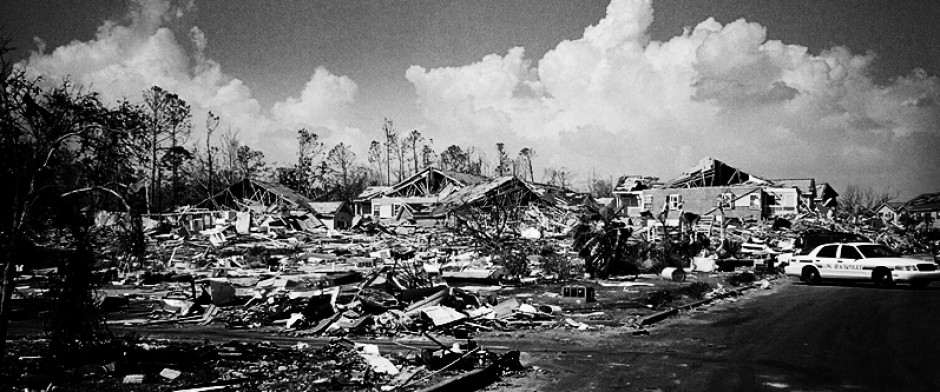
As California’s drought stretches into years, the situation according to California’s Governor Jerry Brown is becoming dire. “Today I’m declaring a drought in the state of California,” said Brown. “We’re facing perhaps the worst drought California has ever seen since records began being kept about 100 years ago.” As a result, incremental actions to restrict water use have been placed into effect. Most recently, Governor Brown announced last Friday that they won’t send any water from the state’s vast reservoir system to local agencies beginning this spring, an unprecedented move that affects drinking water supplies for 25 million people and irrigation for 1 million acres of farmland. The restrictions in water use will be particularly detrimental for anyone involved in agriculture where irrigation is vital for California’s crops raised primarily in arid regions. The result of this drought and necessary restrictions to California industry and agriculture will mean a spike in food prices and even greater job losses in California.
People fall over themselves lauding the wonderful weather Southern California offers its residents. However, what Southern California doesn’t offer is adequate fresh water to support the state’s massive population. Fresh water is the most basic resource for life; yet, over 38.3 million people call it home even though natural sources of freshwater are far inadequate. Historically, the snow pack in the Sierra-Nevada Mountains has filled reservoirs to supplement California’s water demand, but with record low snowfall, no relief is in sight or expected. More alarming is the fact that climatologists are warning that this drought could continue anywhere from a couple decades to two hundred years based on California’s historical climatic cycles. If indeed this drought persists unabated, it could mean that California will be entering a historic dust bowl situation that could effectively collapse the state.
Further compounding the problem is that California leads the country as the largest producer of agricultural products (crops and livestock), accounting for more than 11 percent of the national total, based on the 2007 Census of Agriculture. To support this, approximately 80% of California’s freshwater is used for irrigation. Given the shortages, California cannot provide freshwater for its inhabitants and agriculture and industry. As such, the tap will be turned off first for California’s farmers. In fact the mere threat of water rationing has already forced many farmers to leave fields fallow and write off this year’s crops as a total loss. The situation is even worse for fruit and nut orchards where the water restrictions could kill productive trees that take years to grow to fruit bearing size. Livestock too will not survive without water so cattle, swine, and poultry populations will be slaughtered and not replaced. As farmers shutter their operations until conditions improve, the businesses that sprung up around California’s agricultural industry are also going out of business. This will cost California billions of dollars in lost revenues and further exasperate the already high unemployment in California.
The result of the drop in California’s agricultural production will restrict food supplies even as demand globally is growing causing food prices to skyrocket this year. This will result in major shortages of products that California produces for the United States such as artichokes, lettuce, spinach, peaches, and strawberries. Many other products such as tomatoes, bell peppers, and carrots, which California produces 1/3, 1/2, and 2/3’s of respectively, will see major price spikes. Meat prices will also spike after cattle, swine, and poultry populations are slaughtered since herd numbers are already at historic lows. If not already bad enough news, inflation will continue to erode the purchasing power of the dollar compounded by the dollar’s weakening status globally as a currency. Add this to a nation with an economy already in collapse and its citizens watching any remaining disposable income vanish as their quality of life descends down a toilet bowl lined by socialist and Marxist economic policies and we have a very real recipe for social unrest.
In case the impact of California’s drought hasn’t caught your attention yet and you still don’t see why it matters, let me be clear. The drought in California will cause your grocery bill to double again this year. If you are an average, struggling, middle class American, you will be forced to cut even more from your already bone thin budget and for the first time actually have to go without when it comes to many food items so that you can pay your most basic bills. This will further reduce the disposable (what if any is left) income Americans have to spend, which will put even more retailers out of business this year. This will lead to a cycle of more layoffs and higher unemployment as the US economy enters into a collapse of historic proportions.
Taking a page from the government, this impending disaster offers opportunity for those savvy enough to foresee it and take action. For starters, it would be wise to enter into direct agreements with cattle and pig farmers for set amounts of beef/pork now before prices spike. Buying a steer or hog now at current prices that will be slaughtered later in the year will save you hundreds of dollars if not more later in the year when prices spike. To illustrate the already rising prices, the prices of beef have already spiked 16.8% this year and bacon is up 22.8%. Further, if you haven’t started a sustainable garden you need to begin now. Invest in a large quantity and variety of heirloom seeds suitable for your growing conditions. Gardens are not something that happen magically after tossing a few seeds into the yard. As we have said many times, gardens take time (years), work, and experimentation to perfect. Anyone waiting to the last minute to plant a garden “when things get really bad” will fail miserably. Invest now in a garden that will produce beyond the needs of your family and it will reward you handsomely with tasty, healthy food at a price you can afford. If you don’t have the land, make a deal with someone who does so that you can gain access to fresh produce. Further, any additional produce not needed can be sold or bartered at a premium price later this summer when the shortages and price hikes really begin to be felt.
In summary, California is entering a period of drought that may last beyond our lifetimes or end next year. Either way, the water shortage will cause grocery bills to spike to record high levels. This will further destabilize the already sick US economy. To protect oneself, the smart prepper will invest in food products and sustainable food production capabilities such as good land, farms, livestock, and gardens to insulate his family from the upcoming price hikes and shortages and turn misfortune into a money making opportunity.
By Guiles Hendrik
February 17, 2014
All rights reserved.



